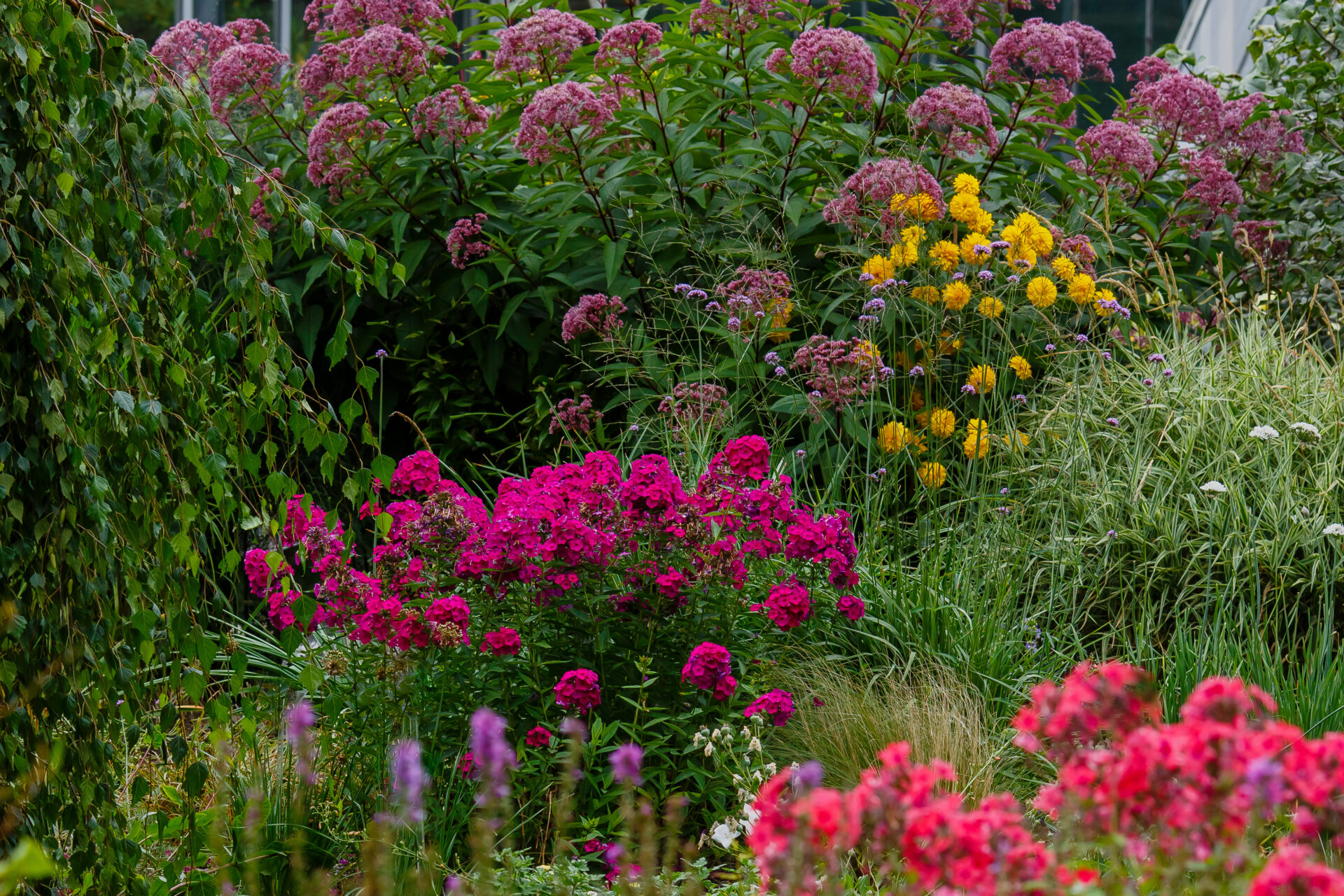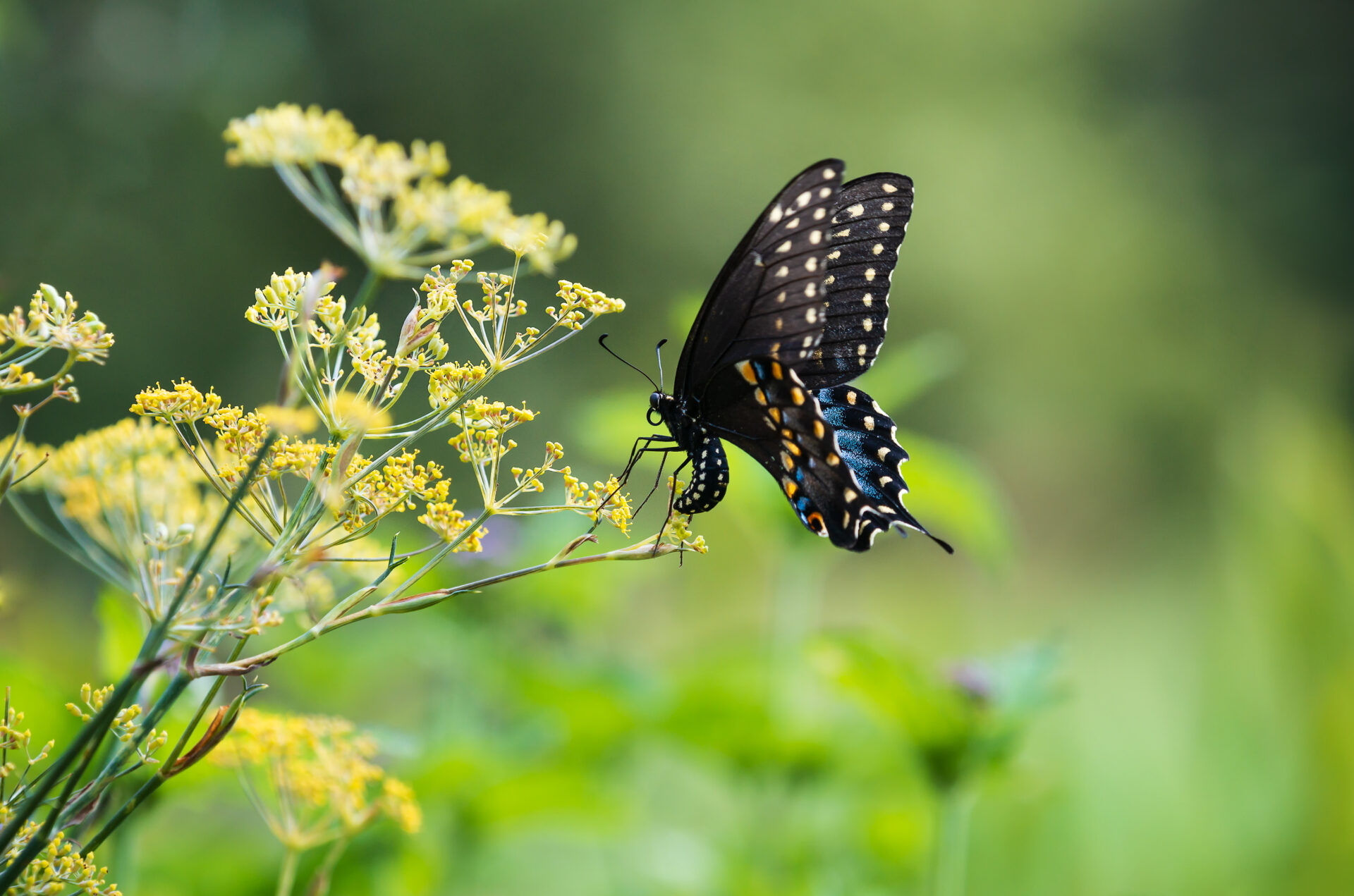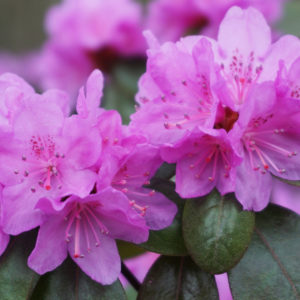
June is pollinator month in Massachusetts and the third week in June is also National Pollinator Week. Making a space that is pollinator friendly can involve planting a variety of perennials, grasses, trees and shrubs that provide food for both adult and larval stages of insect pollinators. If space to plant a garden is restricted or non-existent, using annuals in containers is a great way to supplement nectar sources and they are a good way to ensure a continuous supply of summer flowers. So, whether you wish to plant a swath of pollinator plants, or just have room for a pot or two on a balcony, you need to know what bees and butterflies find attractive.
Both butterflies and bees can see colors, but not in the same way as humans. Our color vision is achieved through three photoreceptors – red, blue and green. Bees also have three photoreceptors, but they are ultraviolet light, blue and green, which leads them to prefer blue, purple and violet flowers. While bees cannot see the color red, they are able to see yellow and orange. Butterflies’ color vision is even more enhanced, and they have the most sophisticated color vision of any living thing. They have between six and fifteen photoreceptors depending on the species of butterfly and this includes ultraviolet light. However, although they have the broadest range of color vision, their vision is not sharp and beyond a distance of 100 feet, objects are blurred. For this reason, swaths of single colors appeal more to butterflies although they are attracted to many colors. Hummingbirds are also pollinators here in Massachusetts, and in addition to the red, blue and green photoreceptors that we have, they also have incredible ultraviolet sensitivity, which leads them to prefer red and pink flowers.
Flowers make use of the broad light spectrum to make themselves attractive to pollinators – if a plant needs an insect pollinator be sure it will have devised a way to attract them! Ultraviolet markings and iridescence act as guidelines to nectar sources, and scent can play a part too. Scented plants that use butterflies and bees as pollinators are strongly scented through the day, while those that rely on moths are night-scented. The strength of the scent is at its strongest when the flower is ready to be pollinated. Flower shape is another factor in attracting pollinators. Butterflies need a landing pad from which to feed, so their preferred flowers are either flat-topped, clustered or tubular. Bees are also adapted to pollinate a variety of flowers, with bumblebees being adept at crawling into flowers to reach nectar. In general, though, simple flower forms offer more accessible nectar and pollen than fancier double forms of the same plant, but that does not mean that such ornamentals are without value.
So, if you are looking for a few plants to attract more pollinators, here are just a few that you could consider:
Trees and Shrubs
- Button Bush (Cephalanthus occidentalis) – native for moist conditions, summer blooming, white spherical flower clusters.
- Summersweet (Clethera spp.) – white or pink flowering native shrub, again summer flowering.
- Bluebeard (Caryopteris spp.) – small shrub with purple/blue flowers attractive to bumblebees.
- Sourwood (Oxydendron arboreum) – small native tree with scented white flowers in spring and vibrant fall foliage.
- Fruit trees – apple, pear, plum, peach and cherry all provide spring nectar sources.
- Linden (Tilia spp.) – shade tree with small, scented yellow-green flowers mid-summer.
- Seven Son Flower (Heptacodium miconioides) – small tree with scented white flowers in September.

Perennials
- Yarrow (Achillea) – great for bees and butterflies, coming in shades of yellow, orange, pink and red.
- Asters (Symphyotrichum and Eurybia) – offer fall color and a late season nectar source and come in a variety of heights and colors from white though pink, purple and blue.
- Phlox – spring blooming phlox provide early food sources for pollinators, while garden phlox fill the summer months. Colors range from white, though pink, red, purple and salmon.
- Sedum – late season pollinator magnet for bees and butterflies alike. Flowers tend to be yellow or shades of pink.
- Allium – another popular bee flower, whether those of chives or the many forms of ornamental onion. “Millenium” and similar, with their profusion of blooms in mid-summer are particularly attractive.
- Herbs – thyme, oregano, rosemary, mint and lemon balm all provide nectar for pollinators if allowed to flower. Thyme also comes in several ornamental ground cover forms and flower color ranges from white through pink to red.
- Montauk Daisy (Nipponanthemum nipponicum) – this large white daisy is one of the last to flower, being in bloom in October and as such provides a welcome nectar source for lingering butterflies and bees.

Annuals
- Lantana – tender perennial, used as an annual in the north-east and produces clusters of nectar-rich flowers in shades of yellow, orange, pink and red.
- Salvia – annuals or tender perennials with attractive tubular flowers in pinks, reds, violets and blue.
- Sunflowers (Helianthus annuus) – with huge disks of true flowers, surrounded by outer petals in shades of yellow, orange and red, sunflowers are attractive to many insect pollinators. As a bonus the seeds of this plant are a food source for birds and small mammals.
- Egyptian Star Flower (Pentas) – with clusters of nectar-rich, white, pink, red or lavender flowers this summer annual is a pollinator favorite.
- Dill – with clusters of yellow flowers and foliage that feeds swallowtail caterpillars, this herb is great for pollinators.

Sources
https://www.fs.usda.gov/wildflowers/pollinators/Plant_Strategies/scent.shtml
https://www.allaboutgardening.com/plants-that-attract-butterflies/







